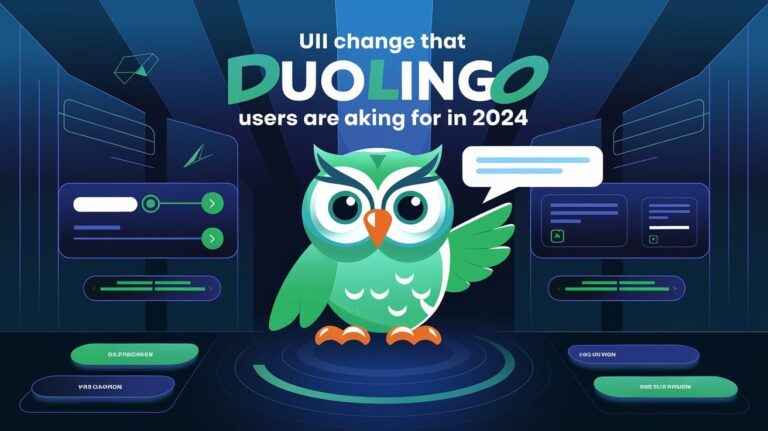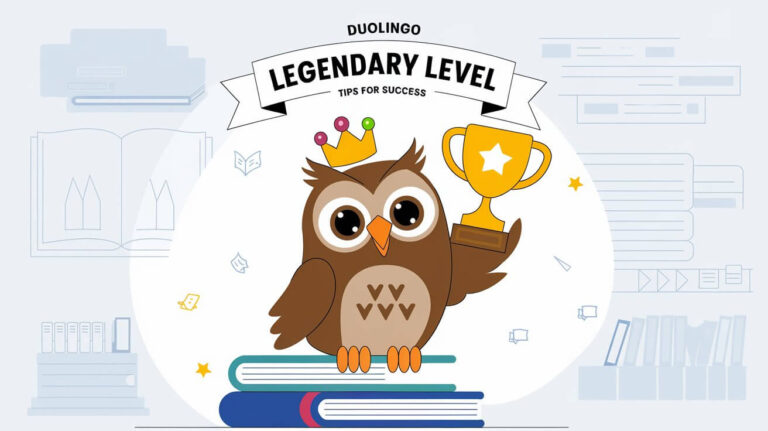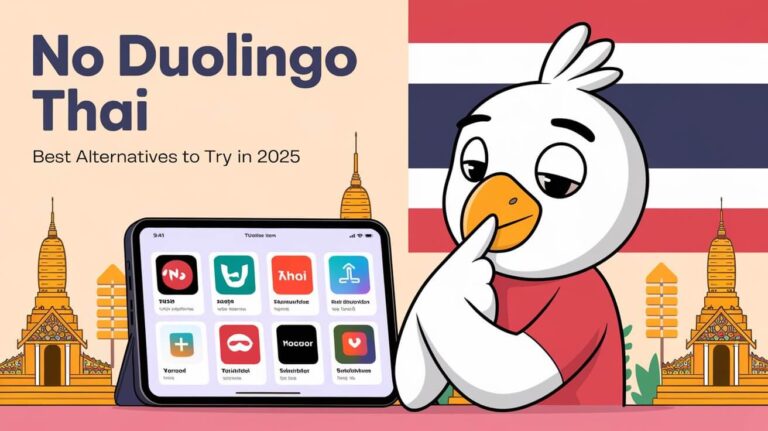Duolingo does not currently offer American Sign Language (ASL) or any other sign language courses. However, this doesn’t mean you’re out of options if you want to learn ASL. Many excellent alternatives exist, ranging from specialized apps to comprehensive online courses. This article will explore why Duolingo hasn’t added sign language, showcase the best ASL learning resources available, and discuss the importance of mastering this visual language.
The Current State of Sign Language on Duolingo
Duolingo’s Language Offerings
Duolingo has become a household name in language learning, offering courses for dozens of spoken and written languages. From Spanish and French to Klingon and High Valyrian, the platform caters to a wide range of linguistic interests. But when it comes to sign languages, Duolingo’s offerings fall short.
Why Duolingo Doesn’t Offer Sign Language (Yet)
The absence of ASL on Duolingo isn’t due to a lack of interest or importance. Several factors contribute to this gap:
- Visual nature of sign language: Duolingo’s current format relies heavily on text and audio. Sign language requires video-based instruction, which would necessitate significant changes to the platform’s structure.
- Complexity of non-manual markers: ASL involves facial expressions and body language that are crucial to meaning. These nuances are challenging to convey through Duolingo’s current lesson format.
- Regional variations: Unlike some spoken languages, ASL has significant regional differences. Creating a standardized course that accounts for these variations presents unique challenges.
- Development resources: Building a high-quality ASL course requires specialized expertise and substantial investment. Duolingo may be prioritizing other language offerings for now.
While Duolingo might add sign language in the future, learners shouldn’t wait to start their ASL journey. Plenty of dedicated resources exist to help you master this valuable skill.
Alternative Apps for Learning American Sign Language (ASL)
Top-Rated ASL Learning Apps
Several apps have stepped up to fill the gap left by Duolingo:
- ASL Bloom: Designed for beginners, ASL Bloom offers structured lessons with video demonstrations and interactive quizzes.
- Lingvano: This app gamifies the ASL learning experience, helping users build sentences and engage in basic conversations.
- The ASL App: Created by deaf native signers, this app focuses on practical, everyday vocabulary through video flashcards.
- Pocket Sign: With its bite-sized lessons and mnemonic tips, Pocket Sign excels at teaching ASL vocabulary quickly and memorably.
- SignLanguage101: This comprehensive app covers everything from basic signs to complex grammatical concepts.
Features to Look for in ASL Apps
When choosing an ASL app, consider these key features:
- Video demonstrations by native signers
- Interactive practice exercises
- Fingerspelling drills
- Cultural context and deaf community information
- Progress tracking and spaced repetition
- Offline access for on-the-go learning
Remember, no single app can replace immersion or interaction with native signers. Use these tools as supplements to a well-rounded ASL education.
Comprehensive ASL Learning Platforms
Video-Based ASL Courses
For a more structured learning experience, consider these online course options:
- SignLanguage.com: Offers a range of video-based lessons for all skill levels.
- ASLPro.com: Provides free lessons, quizzes, and a comprehensive dictionary.
- Gallaudet University’s ASL Connect: Created by the world’s only university designed for deaf and hard of hearing students.
These platforms often provide more in-depth instruction than mobile apps, making them ideal for serious learners.
Interactive ASL Learning Experiences
Some websites offer live, interactive ASL classes:
- TakeLessons: Connect with qualified ASL tutors for one-on-one or group lessons.
- SignLanguage101.com: Offers both self-paced and instructor-led courses.
- ASLMeredith: Provides personalized online ASL tutoring sessions.
These options allow for real-time feedback and conversation practice, crucial elements in mastering ASL.
Free Resources for Learning Sign Language Online
ASL Dictionaries and Vocabulary Tools
Expand your sign vocabulary with these free resources:
- Handspeak.com: A comprehensive ASL dictionary with video demonstrations.
- ASLPro.com: Offers both a dictionary and a fingerspelling tool.
- SignLanguage101.com: Provides a searchable video dictionary of common signs.
These tools are invaluable for looking up unfamiliar signs or checking your form.
ASL Practice Games and Quizzes
Make learning fun with these interactive resources:
- ASLPro.com: Features various quizzes to test your comprehension.
- SignLanguage101.com: Offers games to practice fingerspelling and basic vocabulary.
- ASLFlash.com: Provides flashcards and memory games for sign practice.
Incorporating these games into your routine can help reinforce your learning and keep you motivated.
The Importance of Learning American Sign Language
Benefits of ASL Fluency
Learning ASL offers numerous advantages:
- Communication with the deaf and hard of hearing community
- Enhanced visual perception and spatial reasoning
- Improved multitasking abilities
- Greater cultural awareness and empathy
- A new perspective on language and communication
ASL isn’t just for those with hearing impairments. It’s a rich, expressive language that can benefit anyone.
ASL in Professional Settings
ASL skills can be valuable in many careers:
- Education: Teachers with ASL knowledge can better support deaf or hard of hearing students.
- Healthcare: Medical professionals can provide more inclusive care with ASL skills.
- Law enforcement: ASL can be crucial in emergency situations involving deaf individuals.
- Customer service: Businesses can better serve deaf customers with ASL-fluent staff.
- Interpreting: Professional ASL interpreters are in high demand across various sectors.
As awareness of accessibility needs grows, ASL proficiency becomes an increasingly marketable skill.
How to Choose the Right ASL Learning Method for You
Self-Paced vs. Instructor-Led Options
Consider your learning style when choosing an ASL program:
Self-paced options:
- Flexibility to learn on your own schedule
- Often more affordable
- Can progress at your own speed
Instructor-led options:
- Real-time feedback and correction
- Structured curriculum and deadlines
- Opportunities for conversation practice
Many learners find a combination of both approaches most effective.
Combining Multiple Resources for Effective Learning
Don’t limit yourself to a single learning tool. Create a comprehensive ASL education plan:
- Use apps for daily vocabulary practice
- Watch ASL videos to improve comprehension
- Take online courses for structured learning
- Join local ASL meetups for conversation practice
- Read books about deaf culture and ASL linguistics
By diversifying your resources, you’ll gain a well-rounded understanding of ASL.
The Future of Sign Language on Language Learning Platforms
Potential for ASL on Duolingo
While Duolingo doesn’t currently offer ASL, that could change. As technology advances and demand grows, we might see sign language courses added to major platforms like Duolingo in the future.
Emerging Technologies in Sign Language Education
Exciting developments are on the horizon for ASL learning:
- Virtual reality: Immersive environments for practicing ASL in realistic scenarios.
- AI-powered feedback: Advanced computer vision to evaluate and correct signing technique.
- Motion-capture translation: Real-time conversion of signs to text or speech.
These technologies could revolutionize how we learn and use sign languages.
Tips for Successfully Learning ASL Without Duolingo
Creating a Consistent Study Routine
Consistency is key in language learning. Try these strategies:
- Set aside dedicated ASL practice time each day
- Use spaced repetition to review vocabulary regularly
- Incorporate ASL into your daily life (e.g., practice signs while watching TV)
- Join online ASL study groups for accountability
Remember, even 15 minutes of daily practice can lead to significant progress over time.
Practicing with Native Signers
Nothing beats real-world conversation practice:
- Attend deaf community events
- Join ASL coffee socials or meetups
- Volunteer with organizations serving the deaf community
- Find a language exchange partner online
Interacting with native signers will improve your fluency and expose you to natural language use.
Common Challenges in Learning ASL and How to Overcome Them
Mastering Non-Manual Markers
Non-manual markers (facial expressions and body language) are crucial in ASL but can be challenging for beginners:
- Practice in front of a mirror
- Record yourself signing and analyze your expressions
- Watch videos of native signers to observe their non-manual markers
- Ask for feedback from fluent signers or instructors
Remember, these elements are as important as the hand signs themselves.
Building Finger Dexterity and Speed
Fingerspelling and complex signs require manual dexterity:
- Practice fingerspelling the alphabet daily
- Use online fingerspelling tools to test your speed
- Try finger exercises to improve flexibility and control
- Start slow and gradually increase your signing speed
With consistent practice, your hands will become more nimble and expressive.
ASL Learning Resources Beyond Apps
ASL Textbooks and Workbooks
While digital resources are convenient, traditional learning materials still have value:
- “Signing Naturally” series: A popular textbook used in many ASL courses
- “The American Sign Language Phrase Book” by Lou Fant: Great for building practical vocabulary
- “A Basic Course in American Sign Language” by Tom Humphries: Comprehensive guide for beginners
These books can provide in-depth explanations and structured lessons to complement your digital learning.
ASL Immersion Programs and Workshops
For intensive learning experiences, consider:
- Gallaudet University’s summer ASL immersion program
- National Technical Institute for the Deaf’s summer workshops
- Local community college ASL immersion weekends
These programs offer rapid improvement through full immersion in ASL and deaf culture.
The Role of Deaf Culture in ASL Education
Understanding Deaf History and Community
Learning ASL goes beyond memorizing signs. It’s important to understand:
- The history of deaf education and rights
- Deaf cultural norms and values
- The ongoing debate between oralism and manualism
- Technological advancements affecting the deaf community (e.g., cochlear implants)
This knowledge will deepen your appreciation for ASL and its users.
Etiquette for Hearing Learners of ASL
As you engage with the deaf community, keep these tips in mind:
- Always ask before using sign language with a deaf person
- Maintain eye contact when signing
- Don’t interrupt or talk over someone who’s signing
- Learn about and respect deaf culture
- Be patient with yourself and others in communication
Remember, you’re not just learning a language, but engaging with a vibrant community.
Comparing ASL to Other Sign Languages
Differences Between ASL and BSL
Many people are surprised to learn that American Sign Language and British Sign Language are mutually unintelligible:
- ASL is more closely related to French Sign Language
- BSL uses a two-handed alphabet, while ASL uses a one-handed system
- Vocabulary and grammar differ significantly between the two
This highlights the diversity of sign languages worldwide.
International Sign Language Communication
While there’s no universal sign language, International Sign (IS) is used for cross-linguistic communication:
- IS isn’t a full language, but a pidgin used in international settings
- It combines common elements from various sign languages
- Fluent signers from different countries can usually communicate basic ideas using IS
Learning about these variations broadens your understanding of visual languages.
Conclusion: Embracing ASL Learning Opportunities Beyond Duolingo
While Duolingo doesn’t currently offer sign language courses, this shouldn’t deter you from learning ASL. Numerous high-quality resources exist, from specialized apps to immersive programs. By combining these tools and engaging with the deaf community, you can embark on a rewarding journey into the world of visual language.
Learning ASL opens doors to new friendships, career opportunities, and a deeper understanding of linguistic diversity. Whether you’re interested in personal growth, professional development, or simply want to communicate with more people, ASL is a valuable skill worth pursuing.
Don’t let the absence of ASL on Duolingo hold you back. Start your ASL learning journey today with the many excellent alternatives available. Your future self will thank you for the effort and dedication you put into mastering this beautiful, expressive language.







